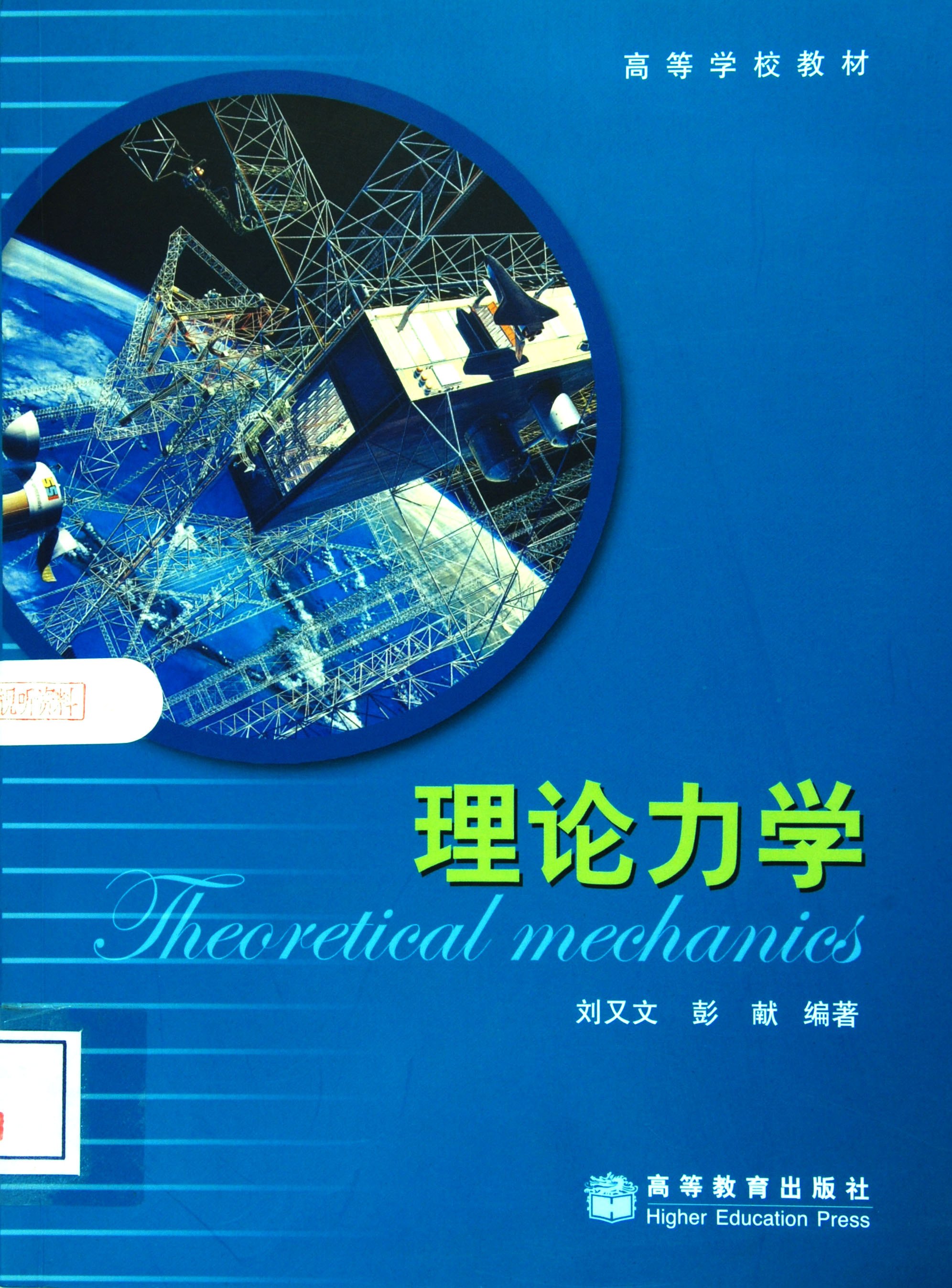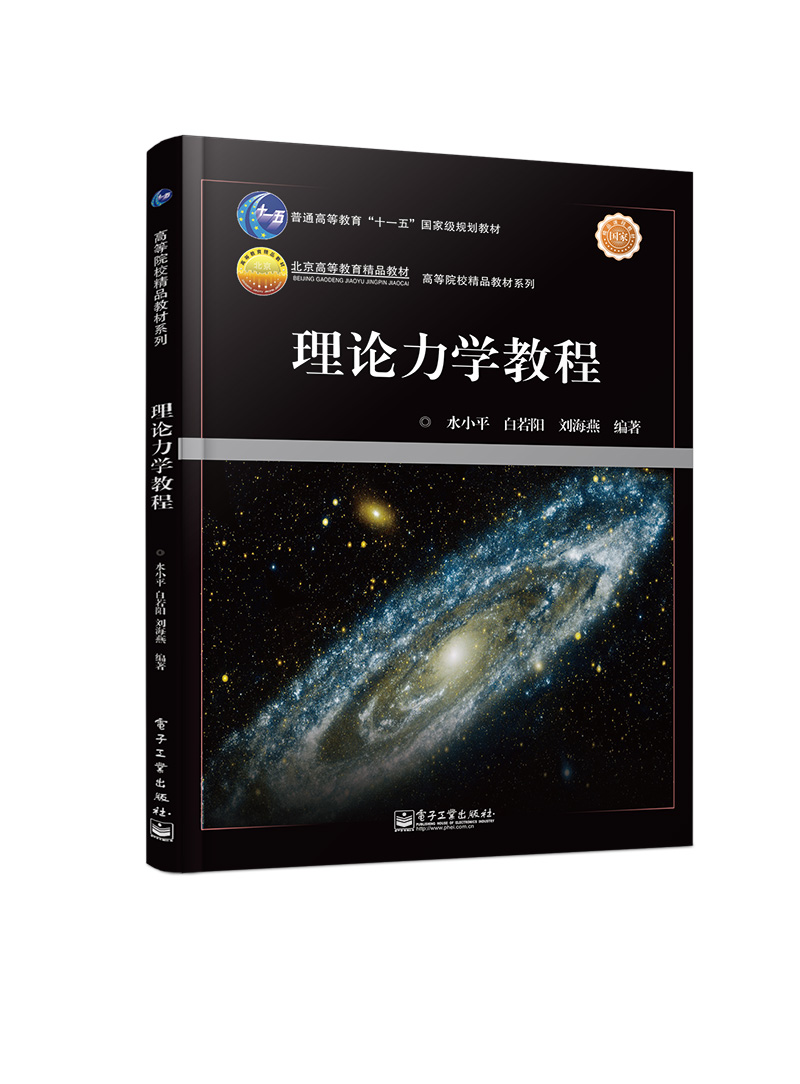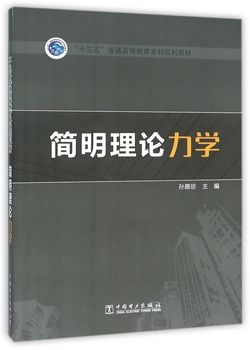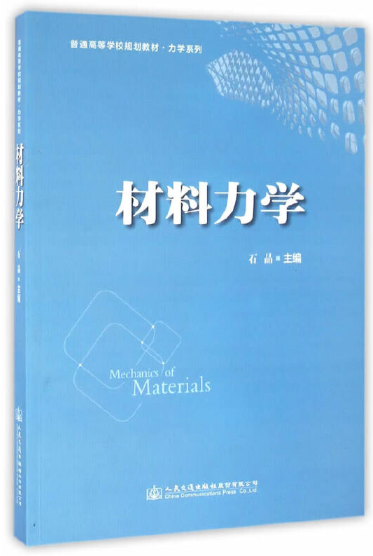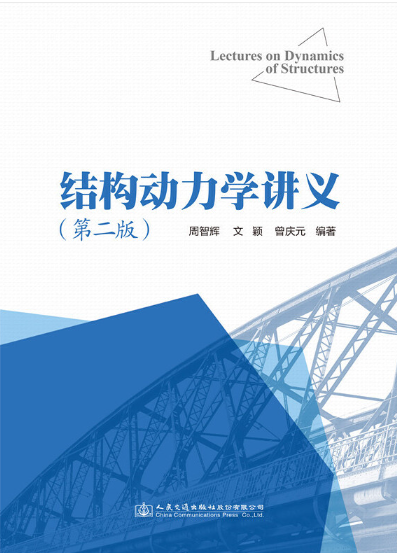理论力学(附光盘1片)
作者: 刘又文
出版时间:2006-07
出版社:高等教育出版社
普通高等教育“十一五”国家级规划教材
- 高等教育出版社
- 9787040193299
- 1版
- 44319
- 47254094-7
- 平装
- 异16开
- 2006-07
- 510
- 425
- 工学
- 力学类
- O31
- 机械、土木类
- 本科
本书是普通高等教育“十一五”国家级规划教材,根据教育部制定的理论力学教学基本要求编写,包括全部必修基本内容和大部分选修专题内容。本书特点是:以质点系为模型,突出理论力学原理的普遍性,以刚体为主要应用对象,同时涉及有关变形固体和流体问题,与后续材料力学、结构力学、流体力学等课程建立了自然的联系。与以往工科教材明显不同之处还有:其一,各篇的理论体系,均从一般到特殊,起点高,理论严谨,结构紧凑,表述简洁,内容较为深广;其二,除重视理论分析外,特别注重理论的应用,如题型的归纳和分析、难点的剖析和梳理、难题的化简和求解;其三,全书贯穿创新训练,正文内容引导探索思维,问题解析激发直觉与灵感,题型变换训练发散与联想,每章后的习题与讨论题提供了不同层次的训练素材。书中许多问题、例题与讨论题是作者的教研成果。
本书分为3篇共9章。静力学篇包含力系的简化和力系的平衡两章;运动学篇包含点的复合运动和刚体的平面运动两章;动力学篇包含动量定理和动量矩定理、动能定理、达朗贝尔原理、虚位移原理与能量法、分析动力学基础五章。与本教材配套的教学辅助课件《理论力学概念·题型与方法》,内容包含概念答疑、思考解析与习题选解等。与本教材配套的还有多媒体电子教案,均以光盘形式与教材同时出版。
本书内容分为两个层次,以不带*号和带*号表示,前者为各类专业的必修内容;后者是供不同专业选用的专题内容。本书可作为高等院校土木、交通、水利、地矿、材料、能源、动力和机械类等专业本科生教材或教学参考书。
绪论
0.1 力学、土木工程力学与理论力学
0.2 理论力学的研究途径与方法
0.3 学习理论力学的目的
第一篇 静力学
引言
第1章 力系的简化
1.1 静力学公理
1.2 力的投影、力矩与力偶
1.2.1 力的投影
1.2.2 力矩
1.2.3 力偶
1.3 力系的简化
1.3.1 力的平移定理
1.3.2 一般力系向一点的简化
1.3.3 力系的最简形式
1.4 物体的重心、质心和形心
1.5 物体的受力分析
1.5.1 受力的简化——分布力与集中力
1.5.2 典型约束模型
1.5.3 研究对象和受力图
习题
讨论题
第2章 力系的平衡
2.1 一般力系的平衡原理
2.1.1 一般力系的平衡条件
2.1.2 特殊力系的平衡方程
2.2 物体系统的平衡问题
2.2.1 静定与超静定问题的概念
2.2.2 物体系统平衡问题的解法
2.3 考虑摩擦的物体平衡
2.3.1 滑动摩擦
2.3.2 摩擦角与自锁
2.3.3 滚动摩阻
2.3.4 典型摩擦平衡问题
习题
讨论题
第二篇 运动学
引言
第3章 点的复合运动
3.1 运动学基础
3.1.1 点的运动描述
3.1.2 点的运动问题
3.1.3 刚体平移
3.1.4 刚体定轴转动
3.2 点的复合运动概念
3.2.1 点的绝对运动、相对运动和牵连运动
3.2.2 动点的运动方程、三种速度和加速度
3.3 点的运动合成定理
3.3.1 动点运动量的坐标表示
3.3.2 点的速度合成定理与加速度合成定理
3.4 点的复合运动问题
3.4.1 点的复合运动的研究方法
3.4.2 典型复合运动问题
习题
讨论题
第4章 刚体的平面运动
4.1 刚体平面运动方程
4.2 平面图形上各点的速度与加速度
4.2.1 基点法
4.2.2 瞬心法
4.2.3 投影形式
4.3 平面机构的运动分析
4.3.1 一般分析方法
4.3.2 典型机构分析
习题
讨论题
第三篇 动力学
引言
第5章 动量定理和动量矩定理
5.1 质点动力学
5.1.1 牛顿三大定律
5.1.2 质点的运动微分方程
5.2 质点系动量定理
5.2.1 质点系的动量
5.2.2 质点系动量定理
5.2.3 质心运动定理
5.2.4 动量守恒与质心运动守恒
*5.2.5 变质量系统的质心运动定理
5.3 质点系动量矩定理
5.3.1 刚体的转动惯量
5.3.2 质点系的动量矩
5.3.3 质点系相对固定点的动量矩定理
5.3.4 质点系相对运动点的动量矩定理
5.4 动量定理和动量矩定理的应用
习题
讨论题
第6章 动能定理
6.1 功与动能
6.1.1 力的功
6.1.2 质点系的动能
6.2 质点系动能定理
6.2.1 动能定理的三种形式
6.2.2 动能定理的应用
*6.3 碰撞
6.3.1 碰撞过程的特点与简化
6.3.2 材料对碰撞的影响·恢复因数
6.3.3 对心碰撞的动能损耗
6.3.4 碰撞冲量对定轴转动刚体的作用·撞击中心
6.3.5 碰撞系统的动能定理
6.4 动力学普遍定理的综合应用
习题
讨论题
第7章 达朗贝尔原理
7.1 质点系的达朗贝尔原理
7.1.1 惯性力与质点的达朗贝尔原理
7.1.2 质点系的达朗贝尔原理
7.2 惯性力系的简化
7.2.1 质点系惯性力系的主矢和主矩
7.2.2 刚体惯性力系的简化
7.3 动静法的应用
7.3.1 动静法的特点
7.3.2 典型非碰撞动力学问题
*7.4 定轴转动刚体的轴承动约束力
7.4.1 定轴转动刚体惯性力系的简化
7.4.2 轴承动约束力
*7.5 非惯性系动力学
7.5.1 非惯性系质点动力学
7.5.2 非惯性系动力学普遍定理
习题
讨论题
第8章 虚位移原理与能量法
8.1 约束分类与位形描述
8.1.1 约束及其分类
8.1.2 广义坐标与位形描述
8.2 虚位移与虚位移原理
8.2.1 虚位移
8.2.2 虚功与理想约束
8.2.3 虚位移原理
8.3 虚功方程应用于刚体系统
8.3.1 方法要点
8.3.2 典型问题
*8.4 虚功方程应用于变形体·卡氏定理·莫尔定理
8.4.1 虚功方程应用于变形体
8.4.2 卡氏定理
8.4.3 莫尔定理
8.5 势力场虚功方程·平衡稳定性
8.5.1 势力场虚功方程
8.5.2 平衡的稳定性
习题
讨论题
*第9章 分析动力学基础
9.1 动力学普遍方程
9.1.1 动力学普遍方程的一般形式
9.1.2 动力学普遍方程的广义坐标形式
9.1.3 动力学普遍方程的应用
9.2 拉格朗日第二类方程
9.2.1 两个经典拉格朗日关系式
9.2.2 基本形式的拉格朗日方程
9.2.3 势力场中的拉格朗日方程
9.2.4 拉格朗日方程的应用
9.3 碰撞系统的拉格朗日方程
9.4 拉格朗日方程的首次积分
9.4.1 广义动量积分
9.4.2 广义能量积分
9.5 拉格朗日第一类方程
9.5.1 拉格朗日第一类方程的建立
9.5.2 拉格朗日第一类方程的应用
9.6 哈密顿正则方程
9.6.1 正则方程的建立
9.6.2 正则方程的初积分
9.7 哈密顿原理
9.7.1 完整系统的哈密顿原理
9.7.2 哈密顿原理的应用
习题
讨论题
主要参考书目
附录A 简单均质几何体的重心和转动惯量
附录B 习题答案
附录C 索引
Synopsis
Contents
作者简介
Preface
0.1 Mechanics,Civil Engineering Mechanics and Theoretical Mechanics
0.2 Channel and Method of Study of Theoretical Mechanics
0.3 Purpose of Study Theoretical Mechanics
Section I Statics 5
Introduction
Chapter 1 Reduction of Force Systems
1.1 Axioms of Statics
1.2 Projection of a Force,Moment of a Force and Couple
1.2.1 Projection of a Force
1.2.2 Moment of a Force
1.2.3 Couple
1.3 Reduction of Force Systems
1.3.1 Theorem of Translation of a Force
1.3.2 Reduction of General Force System to a Point
1.3.3 The Simplest Forms of Force Systems
1.4 Gravity Center,Mass Center and Centroid of Body
1.5 Force Analysis of Body
1.5.1 Reduction of Force Systems——Distributive Forces and Concentrated Force
1.5.2 Typical Constraint Mode
1.5.3 Research Object and Free Body Diagram
Exercises
Discuss Problems
Chapter 2 Equilibrium of Force Systems
2.1 Equilibrium Principle of General Force System
2.1.1 Equilibrium Conditions of General Force System
2.1.2 Equilibrium Equations of Particular Force System
2.2 Equilibrium Problems of Body System
2.2.1 Concept of Determinate and Indeterminate Problem
2.2.2 Method of Solving Equilibrium Problems of Body System
2.3 Equilibrium Problems of the Body System with Friction
2.3.1 Sliding Friction
2.3.2 Angle of Friction and Phenomena of Self-locking
2.3.3 Rolling Resistance
2.3.4 Typical Equilibrium Problems with Friction
Exercises
Discuss Problems
SectionⅡ Kinematics
Introduction
Chapter 3 Composite Motion of a Point
3.1 Foundation of Kinematics
3.1.1 Motion Descriptions of a Point
3.1.2 Motion Problems of a Point
3.1.3 Translation of Rigid Body
3.1.4 Rotation of a Rigid Body about a Fixed Axis
3.2 Concept of Composite Motion of a Point
3.2.1 Absolute Motion Relative Motion and Convected Motion of a Point
3.2.2 Motion Equations of a Point Three Forms of Velocities and Accelerations
3.3 Theorem on Motion Composite of a Point
3.3.1 Coordinate Description on Motions
3.3.2 Theorem on Composition of Velocities and Theorem on Composition of Acceleration
3.4 Problems of Composite Motion of a Point
3.4.1 Method on Composite Motion of a Point
3.4.2 Typical Problems on Composite Motion of a Point
Exercises
Discuss Problems
Chapter 4 Planar Motion of Rigid Bodies
4.1 Equation of Planar Motion of a Rigid Body
4.2 Determination of the Velocity and the Acceleration of the Points of a Body
4.2.1 The Method of Base Point
4.2.2 The Method of Instant Taneous Center
4.2.3 Projection Forms
4.3 Motion Analysis of Planar Mechanism
4.3.1 General Analysis Method
4.3.2 Analysis on Typical Mechanism
Exercises
Discuss Problems
SectionⅢ Dynamics
Introduction
Chapter 5 Theorem of Momentum and Theorem of Moment of Momentum
5.1 Dynamics of a Particle
5.1.1 Newton'Three Laws
5.1.2 Differential Equations of Motion for a Particle
5.2 Theorem of Momentum of Particle System
5.2.1 Momentum of Particle Systems
5.2.2 Theorem of Momentum of Particle System
5.2.3 Theorem of Motion of Mass Center
5.2.4 Conservation of Momentum and Conservation of Motion of Mass Center
*5.2.5 Theorem of Motion of Mass Center for a Mass-varying System
5.3 Theorem of Moment of Momentum for Particle Systems
5.3.1 Moment of Inertia of a Rigid Body
5.3.2 Moment of Momentum for Particle Systems
5.3.3 Theorem of Moment of Momentum to a Fixed Point for Particle Systems
5.3.4 Theorem of Moment of Momentum to a Motion Point for Particle Systems
5.4 Application of Theorems of Momentum and Theorems of Moment of Momentum
Exercises
Discuss Problems
Chapter 6 Theorem of Kinetic Energy
6.1 Work and Kinetic Energy
6.1.1 Work of Force
6.1.2 Kinetic Energy of Particle Systems
6.2 Theorem of Kinetic Energy for Particle Systems
6.2.1 Three Forms of Theorem of Kinetic Energy
6.2.2 Application of Theorem of Kinetic Energy
*6.3 Collision
6.3.1 Characters and Simplifications of Collision Process
6.3.2 Influence of Materials for Collision·Coefficient of Restitution
6.3.3 Loss of Kinetic Energy for Central Collision
6.3.4 Action of Collision Impulse against a Rigid Body in Fixed-axis Rotation·Center of Percussion
6.3.5 Theorem of Kinetic Energy for Collision Systems
6.4 Illustrations of Application of General Theorems of Dynamics
Exercises
Discuss Problems
Chapter 7 D'Alembert's Principle
7.1 D'Alembert's Principle for Particle Systems
7.1.1 D'Alembert's Principle for a Particle and Inertia Force
7.1.2 D'Alembert's Principle for Particle Systems
7.2 Reduction of Inertia Force Systems
7.2.1 Principal Vector and Principal Moment of Inertia Force Systems for Particle System
7.2.2 Reduction of Inertial Force Systems for a Rigid Body
7.3 Application of Kineto-statics Method
7.3.1 Characters of Kineto-statics Method
7.3.2 Typical Problems of No-collision Kinematics
*7.4 Dynamic Reaction on the Axis of General Rotating Rigid Body
7.4.1 Reduction of Inertia Force Systems for a Rotating Rigid Body on the Fixed Axis
7.4.2 Dynamic Reaction of Bearing
*7.5 Dynamics in Non-inertia Reference System
7.5.1 Particle Movements of Non-inertia Reference System
7.5.2 General Theorems of Dynamics in Non-inertia Reference System
Exercises
Discuss Problems
Chapter 8 Principle of Virtual Displacement and Energy Method
8.1 Classification of Constraints and Descriptions of Configuration
8.1.1 Constraints and its Classification
8.1.2 Generalized Coordinate and Descriptions of Configuration
8.2 Virtual Displacement and Principle of Virtual Displacement
8.2.1 Virtual Displacement
8.2.2 Virtual Work and Ideal Constraint
8.2.3 Principle of Virtual Displacement
8.3 Equation of Virtual Work Applying to Rigid Body Systems
8.3.1 Techniques and Outlines
8.3.2 Representative Questions
*8.4 Equation of Virtual Work Applying to Deformation Body·Castigliano Theorem·Mohr Theorem
8.4.1 Equation of Virtual Work Applying to Plasmodium
8.4.2 Castigliano Theorem
8.4.3 Mohr Theorem
8.5 Equation of Virtual Work of Particle Systems in Potential Field Stability of Equilibrium
8.5.1 Equation of Virtual Work in Potential Field
8.5.2 Stability of Equilibrium
Exercises
Discuss Problems
*Chapter 9 Fundamentals of Analytical Dynamics Mechanics
9.1 General Equation of Dynamics
9.1.1 Common Forms of General Equation of Dynamics
9.1.2 Forms of Generalized Coordinate of General Equation of Dynamics
9.1.3 Application of General Equation of Dynamics
9.2 Lagrange Equations of the Second Kind
9.2.1 Two Sutra Lagrange's Equations
9.2.2 Basic Forms of Lagrange's Equations
9.2.3 Lagrange's Equations of Field of Conservation Force
9.3.4 Application of Lagrange's Equations
9.3 Lagrange's Equations of Collision Systems
9.4 First Integrals of Lagrange's Equations
9.4.1 Integral of Generalized Momentum
9.4.2 Integral of Generalized Energy
9.5 First Kind of Lagrange Equation
9.5.1 Formulation of the First Kind of Lagrange Equation
9.5.2 Application of the First Kind of Lagrange Equation
9.6 Hamilton Canonical Equations
9.6.1 Formulation of Canonical Equations
9.6.2 First Integral of Canonical Equations
9.7 Hamilton Principle
9.7.1 Hamilton Principle of Holonomic Constrant
9.7.2 Apply of Hamilton Principle
Exercises
Discuss problems
Main bibliography
Appendix A Center of Gravity and Moment of Inertia of Simple and Equal Geometry
Appendix B Key to Problems
Appendix C Index
Appendix D English Summary
Appendix E English Contents
A Brief Introduction to the Author

